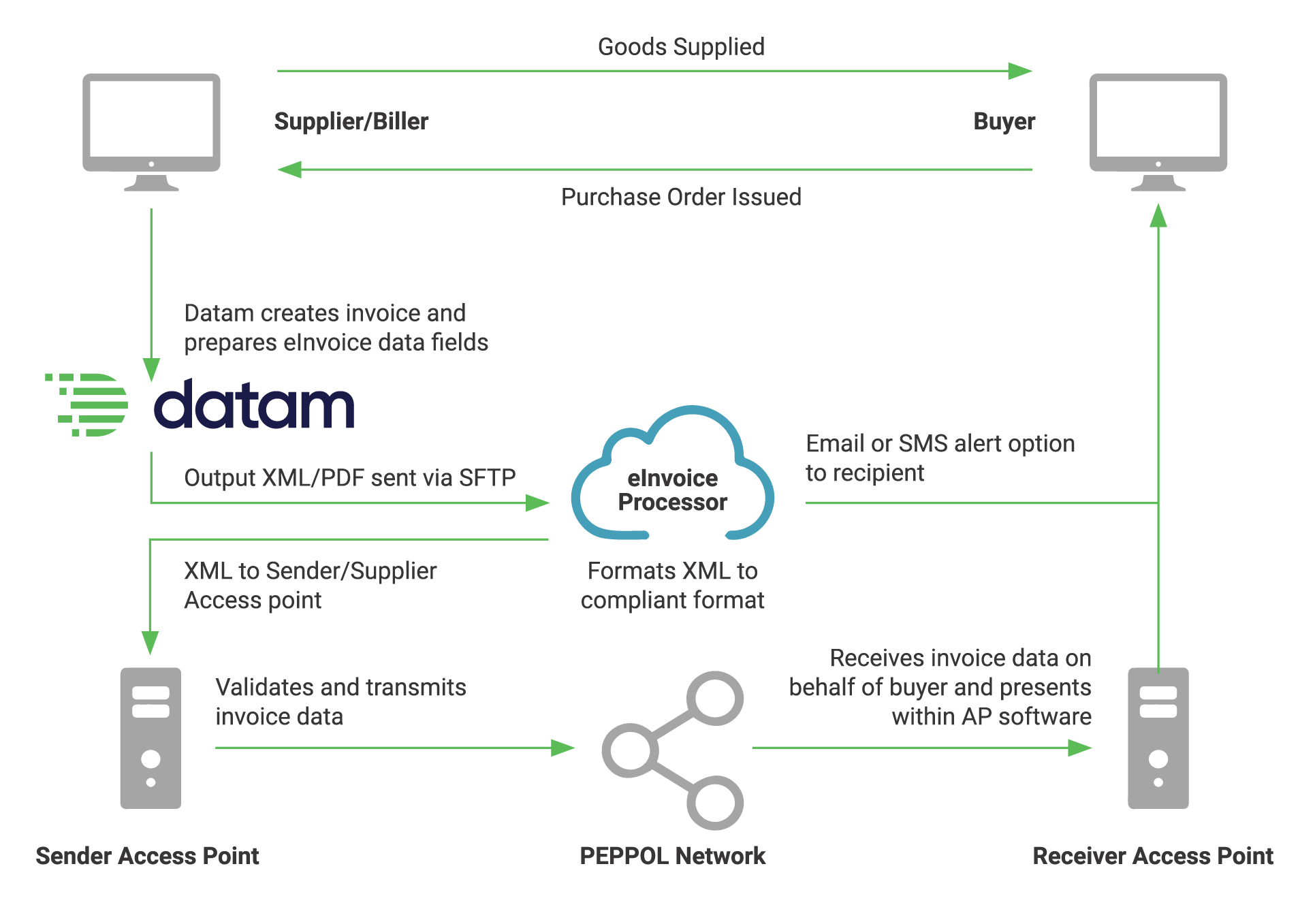eInvoice Peppol
No integration required – Datam enables you to connect to the Peppol network with low effort and low cost.
Improve your accounts receivables quickly and securely
Also known as electronic invoicing, eInvoicing on the Peppol Network enables business-to-business invoicing and payments to be made securely using the government-supported & approved Peppol network.
As an MBIE approved eInvoice software service provider, Datam can send your invoices via the Peppol network without any additional integration or set up costs for your business. Using a single data file that includes the recipients NZBN number, Datam will send your selected invoices via the Peppol network, saving you time and effort.
Have something more complex in mind, or need some advice? Contact us to discuss your requirements.

Why Choose Datam
A proven track record
Over three decades of proven experience. Expertise, processes and resources that are trusted by some of New Zealand’s biggest brands.
Lead with what’s best for the customer
In a digital world where choice is unlimited, our technology and people enable you to deliver secure data-driven communication across multiple channels.
Adding value, making business easier
Our experienced team of experts can help reduce operational pressures and help manage business change.
Backed by a logistics powerhouse
As a New Zealand Post business division, Datam has the credibility and a solid foundation to take business communications into the future.




